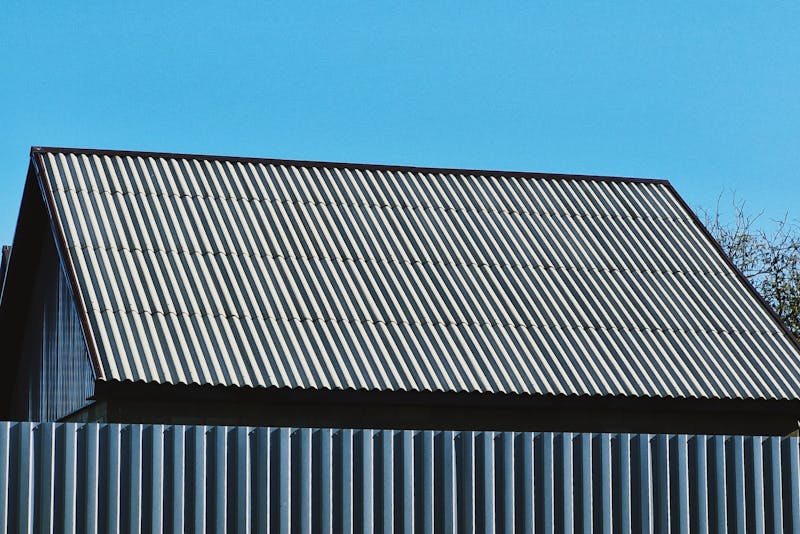- Metal roofing comes in a variety of materials, including steel, aluminum, copper, zinc, and tin, each with unique durability, lifespan, and maintenance needs.
- Common profiles like standing seam, corrugated panels, and metal shingles affect both appearance and performance.
- Steel and aluminum offer the best balance of cost and longevity, while copper and zinc are premium options with lifespans of 70–100+ years.
- Metal roofs generally outlast asphalt shingles, making them a long-term investment despite higher upfront costs.
- Homeowners should consider climate, exposure to humidity or saltwater, and maintenance requirements when choosing a metal roofing type.
- Budget considerations include material, profile, thickness, coating, and installation complexity.
- Understanding these factors helps homeowners select a metal roof that maximizes value, durability, and curb appeal.
Metal roofing has become one of the most sought-after options for modern homeowners, thanks to its impressive durability, variety of styles, and long-term energy savings. Whether you’re planning a roof replacement or exploring alternatives to traditional shingles, understanding your material options is the key to making a smart investment.
Each type of metal roof has unique strengths, price ranges, and expected lifespans, making it important to compare them carefully before committing. This guide breaks down the most common types of metal roofing used in residential construction and what homeowners should consider in terms of performance and cost.
What Are the Different Types of Metal Roofing?
Metal roofing is not one-size-fits-all. With several materials and profiles available, homeowners can choose a roof that fits their climate, home style, and long-term maintenance expectations. The most popular types include steel, aluminum, copper, zinc, and tin, each offering varying levels of durability and cost efficiency. Some materials are better suited for coastal locations, while others excel in extreme heat or cold. By learning the characteristics of each option, you can match your roofing system to your home’s needs and your long-term budget. Below is an overview of what sets each type apart.
1. Steel Roofing

Steel is the most commonly used metal roofing material due to its strength and affordability.
Benefits include:
- Highly resistant to harsh weather
- Available in multiple grades and coatings
- Budget-friendly for most homeowners
Steel roofs often last 40–70 years, depending on thickness and finish. They are ideal for homeowners wanting long-term protection without premium pricing.
2. Aluminum Roofing
Aluminum is lightweight, corrosion-resistant, and excellent for coastal homes exposed to saltwater.
Why homeowners like it:
- Resistant to rust in humid or marine environments
- Long lifespan of 50+ years
- Requires minimal upkeep
Aluminum tends to cost more than steel, but it pays off in areas where humidity or saltwater exposure are major concerns.
3. Copper Roofing
Copper roofs are known for their premium appearance and exceptional longevity.
Notable features include:
- Lifespans of 80–100+ years
- Natural patina that enhances over time
- Extremely durable and rust-proof
While copper is one of the most expensive options, its lifespan and timeless look make it a luxury investment.
4. Zinc Roofing
Zinc is another high-end roofing material famous for its impressive lifespan and self-healing properties.
Homeowners choose zinc for:
- Long lifespans of 70–100 years
- Corrosion resistance
- Ability to naturally repair scratches over time
Zinc comes with higher upfront costs but minimal maintenance and strong environmental benefits.
5. Tin Roofing (Terne Metal)
Tin roofing, historically popular for older homes, is now updated with modern terne-coated steel.
Key advantages include:
- Lightweight material
- Reasonably affordable
- 30–50-year lifespan
Tin is less common today but remains an option for homes needing a traditional aesthetic.
Profiles and Styles: Which Look Fits Your Home?
Choosing a metal roof isn’t only about the material. Homeowners can select from several profiles and styles, which can dramatically affect the appearance and performance of the roof. The three most common profiles include standing seam, corrugated panels, and metal shingles. Each option offers different levels of weather resistance and curb appeal while also affecting overall costs. Understanding the visual and functional differences helps homeowners choose the best combination of style and durability for their home.
Standing Seam Panels
Standing seam roofs feature tall, vertical seams that lock together.
They offer:
- Sleek, modern appearance
- Superior water and wind resistance
- Long-lasting structural integrity
Corrugated Metal Panels

These have wavy, rippled patterns and are often the most budget-friendly.
Advantages include:
- Quick installation
- Lightweight materials
- 30–50-year lifespans
Metal Shingles
Metal shingles imitate asphalt or slate while providing the strength of metal.
Benefits:
- Classic appearance
- High fire resistance
- Easier repairs and replacements
Budget Considerations: Which Option Is Worth the Investment?
When comparing costs between materials, homeowners often wonder how metal roofing compares to traditional roofing materials. In fact, many ask: Is metal roofing cheaper than shingles? While the upfront cost of metal is usually higher, the long-term value often outweighs the initial difference. Metal roofs can last two to three times longer than asphalt shingles and require less maintenance over their lifespan.
What affects metal roofing costs:
- Material type (steel is cheaper, copper is premium)
- Thickness and coating
- Profile (standing seam costs more than corrugated panels)
- Labor and installation complexity
For most homeowners, steel and aluminum deliver the best balance of affordability and durability. Premium materials like copper and zinc offer unmatched longevity but come with higher upfront investments.
